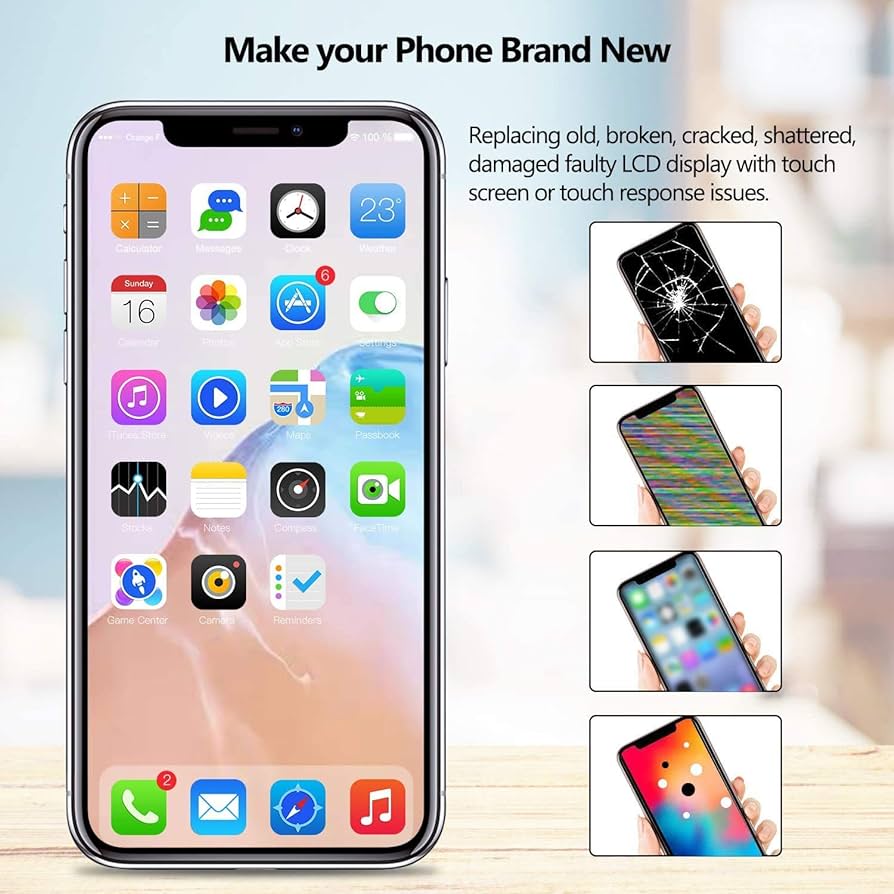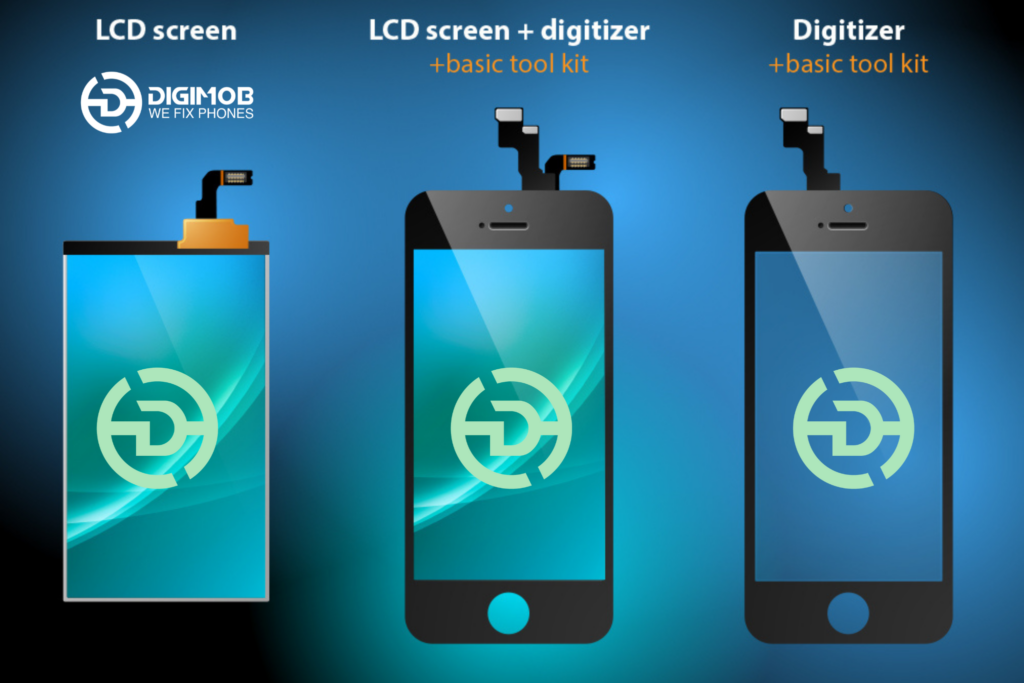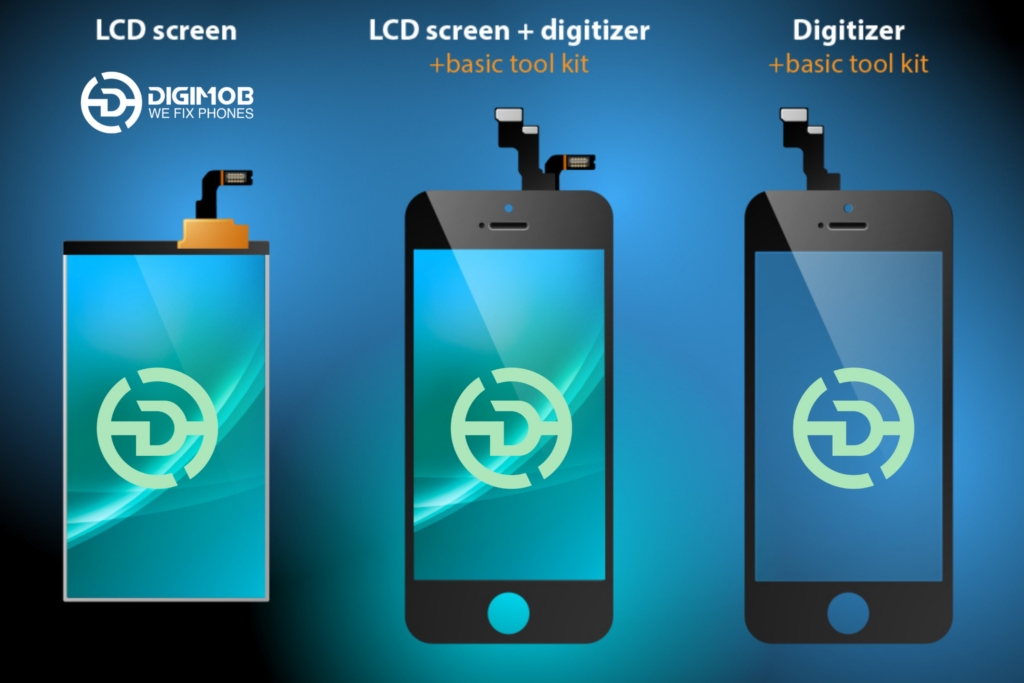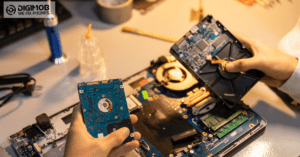In the era of sleek smartphones and touch-centric devices, we often take for granted the marvels of technology that enable our seamless interactions. One such unsung hero behind the magic of touchscreens is the digitizer, a vital component embedded within the iPhone screen. In this article, we delve into the intricate world of digitizers, exploring their functions, types, and the pivotal role they play in our everyday mobile experiences.

What is a Digitizer?
Unveiling the Enigma: What is a Digitizer?
At its core, a digitizer is a technological wizard that translates the physical act of touching your iPhone screen into a language the device can comprehend. It is a transparent layer positioned on top of the display, working tirelessly behind the scenes to make your touch commands a reality.
When you tap, swipe, or pinch on your iPhone screen, the digitizer springs into action, capturing the electrical impulses generated by your touch. This essential component serves as the bridge between the physical world and the digital realm, ensuring a seamless and responsive user experience.
The Capacitive Charm: How Digitizers Work
The most common type of digitizer found in modern smartphones, including iPhones, is the capacitive digitizer. This technology relies on the conductive properties of the human body to detect touch. As your fingertip makes contact with the screen, it disrupts the electrostatic field on the surface of the digitizer.
This disruption is then translated into electrical signals that pinpoint the precise location of your touch. The digitizer relays this information to the device’s processor, enabling it to execute the corresponding action, be it opening an app, typing a message, or zooming into a photo.
The capacitive charm of digitizers lies in their accuracy and responsiveness. Unlike older resistive touchscreen technologies, which require pressure to register the touch, capacitive digitizers provide a more intuitive and effortless user experience.
Behind the Curtain: Types of Digitizers
While capacitive digitizers dominate the smartphone landscape, there are other types worth mentioning. Resistive digitizers, for instance, use pressure-sensitive layers that respond to any form of pressure, including stylus input. Though less common in modern smartphones, resistive digitizers find utility in specific applications like signature pads and industrial devices.
Projective capacitive digitizers, on the other hand, enhance the capacitive technology by enabling multi-touch gestures. This innovation has become a standard feature in today’s smartphones, allowing users to pinch, zoom, and swipe with ease.
The Digitizer’s Crucial Role in User Experience
Imagine a world where your touch commands are met with silence or delay. This nightmare scenario becomes a reality when the digitizer malfunctions or becomes damaged. An unresponsive or inaccurate touchscreen can quickly transform the smartphone experience into a frustrating ordeal.
The digitizer’s role in user experience extends beyond responsiveness; it also influences the device’s overall durability. As a transparent layer exposed to the elements, the digitizer must withstand scratches, smudges, and accidental impacts. Manufacturers employ various coatings and materials to enhance the resilience of digitizers, ensuring your iPhone screen remains as vibrant and responsive as the day you unboxed it.
Calibrating the Magic: Challenges in Digitizer Technology
While digitizers have undoubtedly transformed the way we interact with our devices, they are not without their challenges. One common issue users may encounter is “digitizer drift,” where the touchscreen registers touches in the wrong location. This can result from factors like software glitches, physical damage, or calibration errors.
Calibrating a digitizer involves aligning its coordinates with the display’s pixels, ensuring accurate touch recognition. Manufacturers implement sophisticated algorithms to minimize calibration issues, but occasional recalibration may be necessary to address drift and maintain optimal performance.

The Future of Digitizers: Innovations and Beyond
As technology advances, so too does the potential for digitizer innovations. Manufacturers are continually exploring ways to enhance touch sensitivity, improve gesture recognition, and increase durability. Emerging technologies, such as in-display fingerprint sensors and foldable displays, further push the boundaries of what digitizers can achieve.
Gesture-based interactions, propelled by advancements in artificial intelligence and machine learning, are poised to redefine how we navigate our devices. Imagine controlling your iPhone with a wave of your hand or executing commands with a simple glance. These futuristic possibilities underscore the dynamic nature of digitizer technology and its potential to shape the way we interact with our devices in the years to come.
Mobile repair services on Digimob’s website https://digimob.com.au
Conclusion: The Unsung Hero of Touchscreen Technology
In the grand symphony of smartphone technology, the digitizer might be an unsung hero, but its role is undeniably pivotal. From translating our every touch into digital commands to enabling multi-touch gestures, the digitizer is the silent enabler of our daily interactions with our iPhones.
Understanding the intricacies of the digitizer sheds light on the magic that unfolds beneath the surface of our screens. As we marvel at the sleek designs and vibrant displays of our iPhones, let’s not forget to appreciate the silent workhorse—the digitizer—that transforms our touch into a language our devices can understand.



